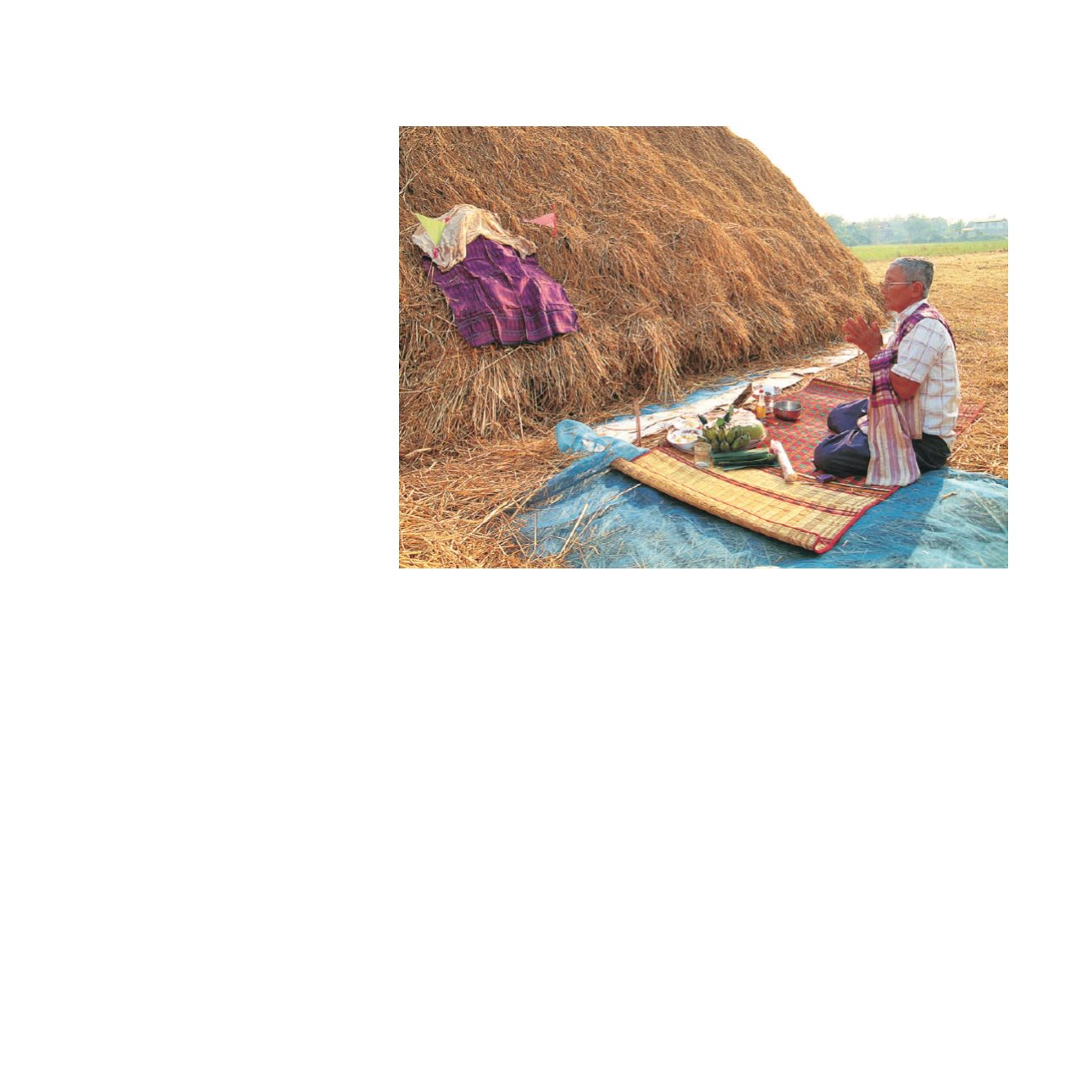

Precious Traditions and Ways of Life
|
47
• The Tham Khwan Khao ritual will be performed again after harvests and bringing rice together in the yard,
as a way to express gratitude to the sanctity and Mae Phosop for the support of the perfect yields.
The way of rice cultivation each year is rotated according to the farming season.
After harvesting, rice farmers will invite Khwan Khao or Mae Phosop on a barn. When it comes
the time of sowing rice again next year, the first rice ploughing ceremony will be performed on
a good day to invite Mae Phosop to the paddy field. Then, Khao Khwan (rice collected from
the last the ritual) are brought to mix with ordinary rice to cultivate and sow the grains as for
blessings. Farmers will recite a spell and a verse to entrust Mae Phosop to Phra Mae Thorani
(Mother Earth) and other spirits in the paddy field. Next, they choose another good day to
perform the ritual of first rice seedlings transplanting.
When rice is pregnant, farmers will build a temporary shrine and make the offerings to
Mae Phosop. Bamboo is prepared for weaving a five-angle sign, together with a small basket
to put the offerings. With the belief that Mae Phosop is a young woman, a plate of offerings
is normally filled with food for the pregnant, such as coconut water, sugar cane, betel nut and
leaf, and especially sour food, like orange and tamarind. In addition, the ceremony performer,
often a female owner of the paddy, also need to bring a glass, comb, powder, scented water,
lip wax, Phasin (sarong), paper flags, to make the Tham Khwan Khao ceremony or visit Mae
Phosop in the paddy field as well.


















